The terracotta temples of Bishnupur were worth the trip from Delhi. But the Bishnupur Baluchari silk saree also wove a story. Starting from Baluchari saree history to Baluchari motifs, it was culture travel not too far from Kolkata, the cultural capital of India.
Baluchari Silk Saree
Khaat-khaatak… Khaat-khaatak… Khaat-khaatak
As we approached the Baluchari weaver’s village in Bishnupur, we could hear from a distance sound of wood pieces clatter against each other. When we reached, we saw that the sound was coming from the shutters of the Baluchari loom hitting against each other. We realised, perhaps for the first time, the literal significance of the word “looming” in the English dictionary.
Kolkata was traditionally called the cultural capital of India. There is so much we have discovered during our travel here. And many of these have been sheer culture trips. Not only have we seen the popular sites but also experienced art and craft which is a way of being here.
A very popular handloom tradition in West Bengal is the Baluchari weave. This post is about the Baluchari weave, how that travelled to Bengal, and how we travelled and experienced this process.

What is Baluchari Silk Saree?
Baluchari is ancient brocade like weave. Rich tapestries depicting flowers, animals, kings and queens, paisleys and other motifs are woven on silk fabric in bold colours. The fine weave creates an illusion of a picture painted on the fabric.
Baluchari weave, in its present form, is used to create sarees. Of late, stoles and shawls are manufactured using this weave.
Baluchari, GI of West Bengal, is like a dream woven in silk.
Which district is famous for Baluchari saree?
The unanimous answer is Bankura in West Bengal. Although historically Bishnupur, a town in Bankura, was not where Baluchari was manufactured, in the course of events this weave became synonymous with Bishnupur.
Bishnupur is about 140 km form Kolkata and is approachable by car, trains and buses. We took the early morning train and reached in about 4 hours. Bishnupur is a treasure trove in terms of art and architecture. The terracotta temples of Bishnupur, are a hidden treasure of Bengal and we travelled to experience that.
Bishnupur Gharana music had enthralled connoisseurs for decades although there are very few exponents left now. Crafts wise, Bishnupur is famous for the Dasabatar cards, scroll paintings, terracotta art. It is also home to the world famous Baluchari weave.
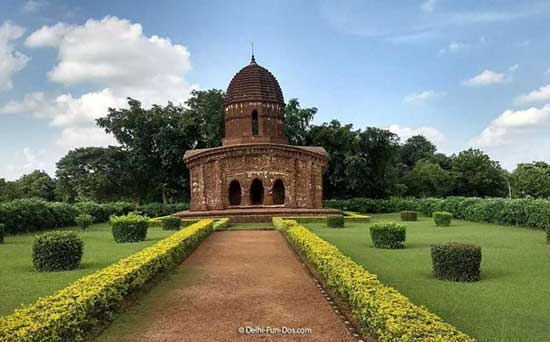
Baluchari saree history
The background of Baluchari is like time travel. The history goes back to the Mughal era. The Mughal rulers got the brocade weaving style from Persia to Banaras in India. Baluchari is essentially a brocade weave that was introduced in Banaras. The early Baluchari weaves carried motifs depicting Sultans smoking hookahs and their Begums playing board games or sniffing flowers. Most of these sarees had a central panel with big paisleys woven in many colours. The paisley design originated in Persia, moved to India with the Mughal and became famous all over the world during Mughal trade.
PIN IT FOR LATER READ

Murshid Quli Khan, the Nawab of Bengal was impressed with the beauty of Baluchari and got a branch of weavers from Banaras to come and settle in the village Baluchar in Murshidabad. Most weaves in India have got their names from their geographical origin. Thus, the sarees woven in Baluchar village were then identified as “Baluchari”.
Baluchar, crudely translated “river bank covered with sand”, was located beside the River Bhagirathi, the name given to River Ganga in Bengal. The area was prone to devastating floods and the weaver community had to move from here. They now migrated to Bishnupur in Bankura, a relatively dry zone. Bishnupur, under the rule of the Malla dynasty, was already rich in music and art legacy. Therefore the rulers here welcomed the extremely skilled Baluchari weavers and helped them settle and practice their craft. Over time, Bishnupur became the address for Baluchari weave.
However, the British era was not a great time for traditional Indian skills and saw a decline in demand for Baluchari. Given the lack of interest, the weavers moved to other vocations. Much later, in 1950s, Subho Thakur, an art aficionado took initiative in reviving the Baluchari in Bengal. He located Akshay Kumar Das, a weaver in Bishnupur and motivated him to weave Baluchari using the jacquard loom weaving process. Consequently, a Baluchari saree, that earlier took about a month to weave, could now be completed in about 7 days. Thus came about the current age of Baluchari with new themes and designs.
There is still the Banaras legacy of Baluchari and few rare Baluchari in original design are still woven here by a handful of weavers.
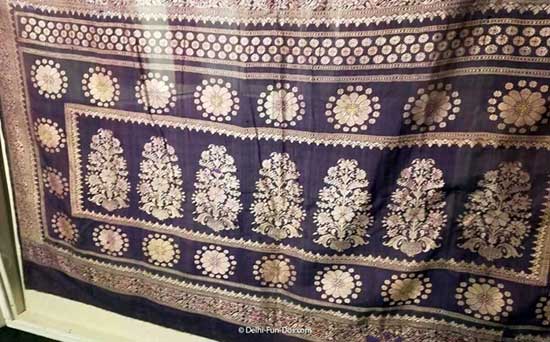
Baluchari Silk Saree Speciality
Baluchari saree is a unique weave that stands out for its colour, texture, but more so the motifs and patterns. In fact, motifs are the focus of the Baluchari. Structurally, the Baluchari has a moderate size border with small patterns on the body and a long and heavily woven right hanging end or the pallu.
As we mentioned, the earlier Balucharis reflected lives of the Mughal rulers and nobles. In fact, some of the later sarees also sported images of Britishers in suits and hats.
The revival of Baluchari by Subho Thakur saw a sea change in the patterns with focus being on local themes. Subho Thakur was a celebrated artist himself. He brought stories from Ramayan and Mahabharat as themes for the modern Baluchari. This was perhaps the turning point and still the chief reason for popularity of Baluchari in the country. A select episode from the epics would be woven on the pallu and motifs related to the theme would be woven on the border and body. Human and animal figures embellish most Balucharis that are available in the market now. During our visit to the Baluchari village we spotted a piece of the Pallu that the weavers had made by way of experiment. This piece depicted the “Geetapodasham” or the revelation of Bhagwad Gita between Lord Krishna and Arjun at the Kurukshetra battle field. This Baluchari work was framed and has a pride of place on the wall.
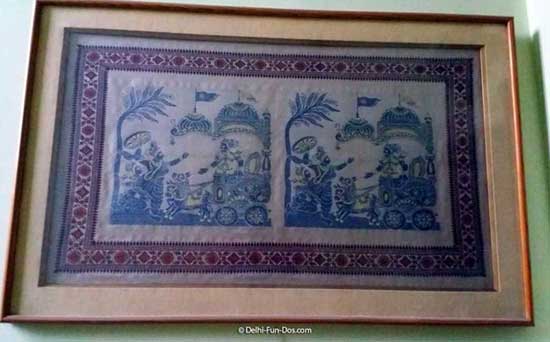
Another piece that we spotted had the motif of the Dalamadal canon with Lord Krishna firing it. This is based on a local legend of Bishnupur and we have elaborated more on this in our article on Bishnupur.

Since figures are the signature design on Baluchari, these are seen on almost all pieces. Of late, by way of experiment some Balucharis with only floral patterns are being woven. But these are yet to gain popularity in the market.
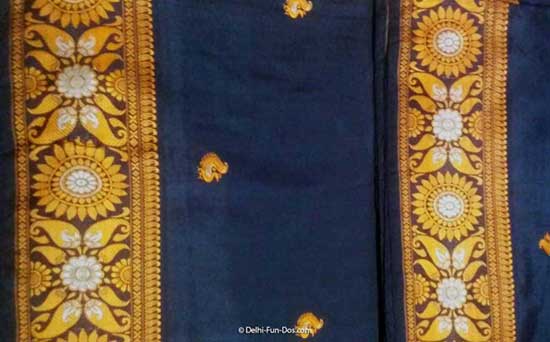
Baluchari Silk Saree Price
Baluchari involves expensive raw material as well as arduous labour. Prices of silk and gold thread have escalated in the last decade. Plus, even with modern jacquard looms, it takes at least a week to complete a saree. Therefore the price of a basic Baluchari saree starts at Rs. 5000/- and can easily go up to Rs. 25000/- to Rs. 30000/- depending on the heaviness of the silk, the numbers of colours used in the patterns and how elaborate is the design. Needless to say, Baluchari is a luxury item and is handed down generations; like heirloom.
Given the prices perhaps, weavers have started weaving Baluchari design on cotton too. There is no use of silk and that reduces the raw material price. The cotton Balucharis may start from Rs. 1000/-.
Where to Buy Baluchari Silk Saree
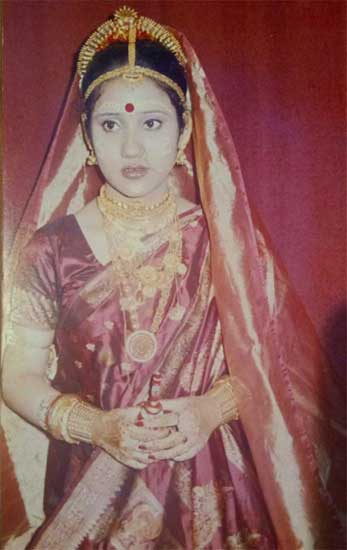
Baluchari sarees are available in all major saree showrooms all over India. We have come across some beautiful pieces at Khadi in Delhi as well. However below are some hotspots for this item.
Baluchari saree in Bishnupur
If you are visiting Bishnupur and want to make a purchase at the place of production, you can visit any of the shops. Most of these are reliable and sell genuine products.
Baluchari saree in Kolkata
From experience we can say that the best of the Baluchari produce comes to Kolkata for it is a much wider market. Any respectable saree shop in Kolkata would carry Baluchari saree. Given that it is an expensive item and if you are not confident it is best to go to government places like Tantuja or other reputable shops.
Biswa Bangla in Delhi
Biswa Bangla the government of West Bengal handloom and handicrafts emporium has a rich collection of Baluchari and can be a great source in Delhi NCR.
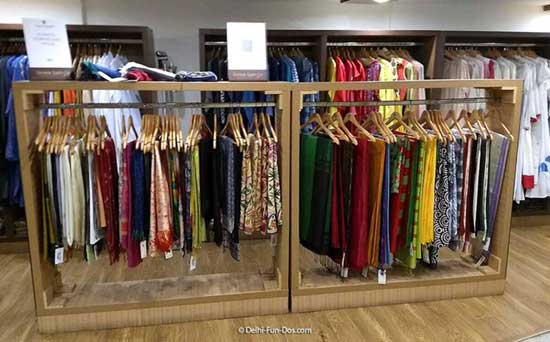
What is Swarnachari Saree
Swarnachari is an innovation on the conventional Baluchari. The richness of the Baluchari weave was rendered with detailed pattern in single or multiple colours. With changing times, consumers were impatient for variety. Therefore a new style of Baluchari was introduced where the designs were woven with gold-coloured thread. This innovation looked gorgeous and was called “Swarnachari”; Swarna means gold. Swarnacharis are bright and very festive but we like the conventional Baluchari more. The designs are way more prominent when woven with subtle traditional colours.
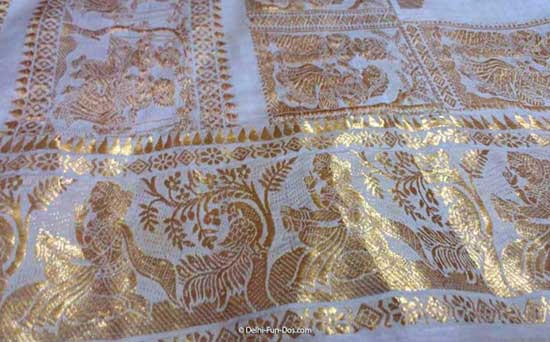
Pro tip
If you do not have much background and want to purchase a Baluchari item, we suggest government emporiums. West Bengal government emporiums are well stocked. In fact, central government emporiums like Central Cottage Industries Emporium, Delhi, Khadi Emporium in Connaught Place, Delhi are also good places. Baluchari sarees are available in myriad colours in patterns. If you are in Kolkata, be prepared to hop shops till you find the piece of your liking. If you get chatting with the shop keepers, who are forever ready to provide trivia and details about the story woven in the saree or stole, it would be a culture travel for you as well.
Silk mark on Baluchari
The Government of India has a certification process by which they certify that a certain textile item is made of pure silk. This comes by way of a printed paper tag that is attached to the certified item. Baluchari saris are eligible for Silk Mark and in fact many manufactures adhere to this standard. In case you are not an expert in silks, or Baluchari sari, you can safely purchase only such Baluchari that bears the Silk Mark.
Saree pictures are from personal collection of Bedabrata’s mother and our friend Debabrata Ghosh.

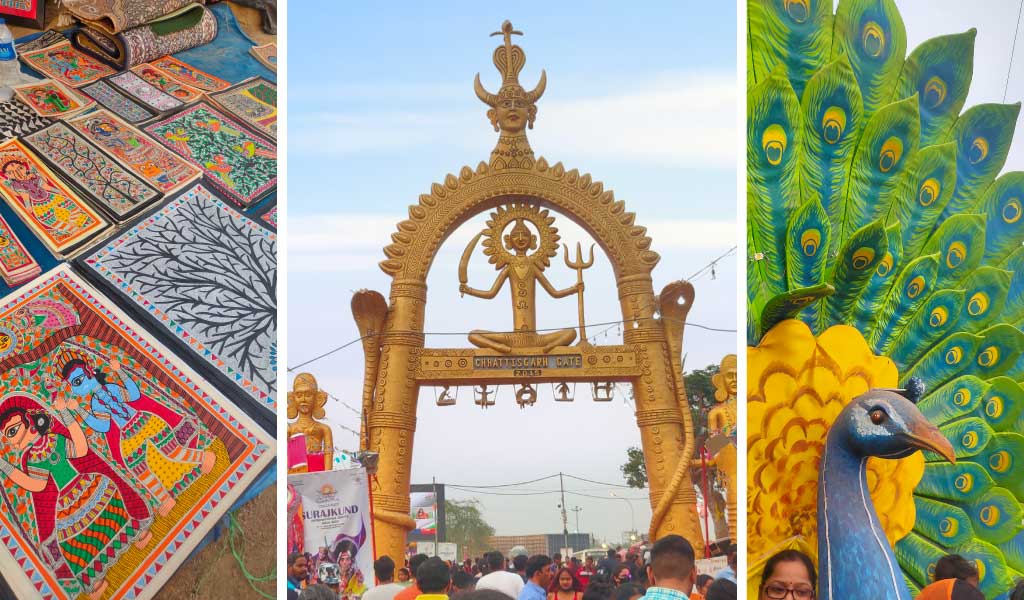
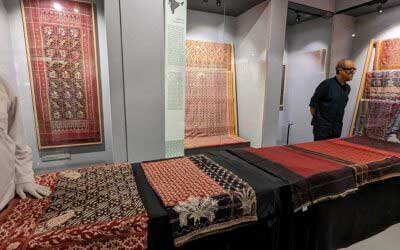
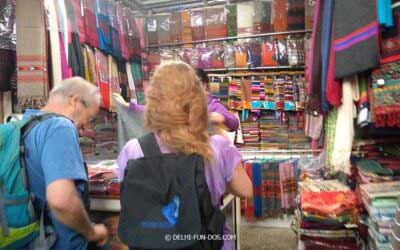
My best friends owns a baluchari silk saree and it has been one of his favourite Saree.
I have been a lover of silk and finding the fact it’s best in kolkata. I will definitely buy some when I will visit Kolkata.
Let us know of the experience.
Bishnupuri pure katan silk handloomBaluchari and Swrnachari Saree